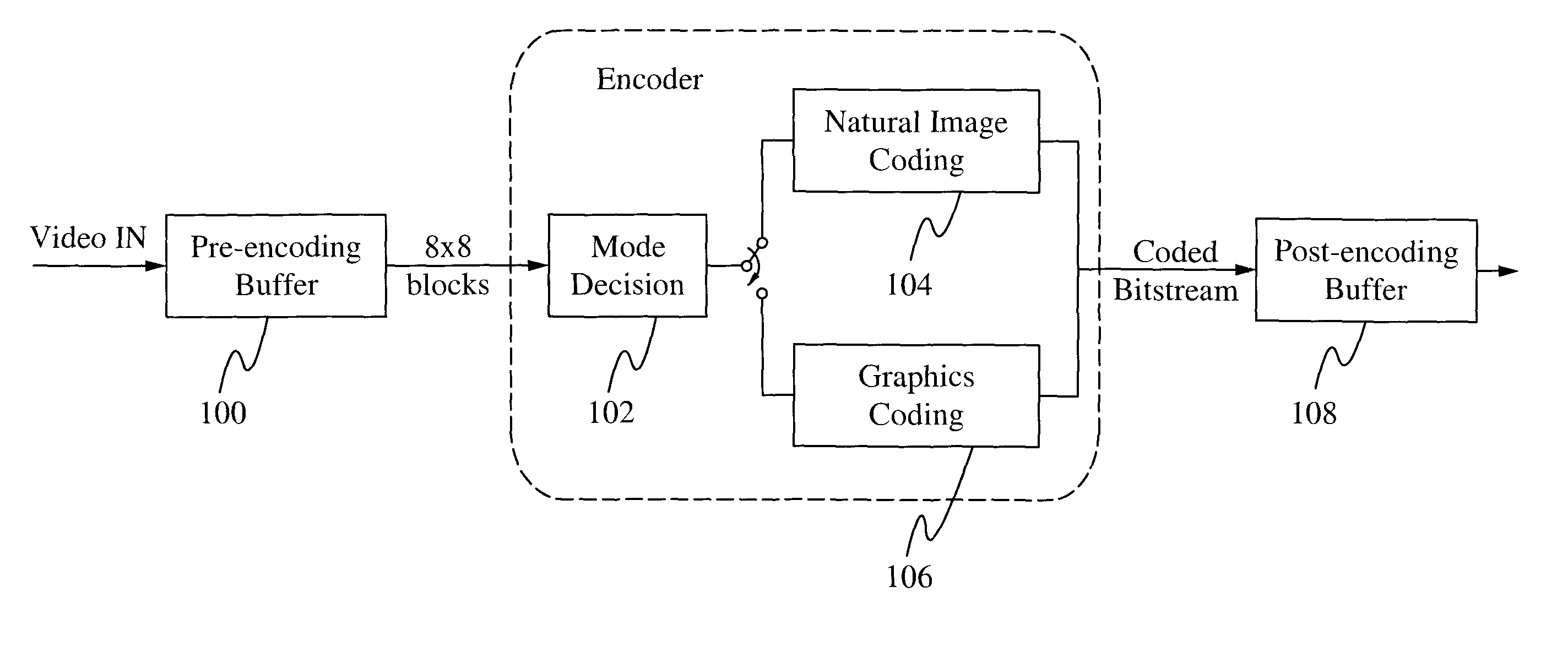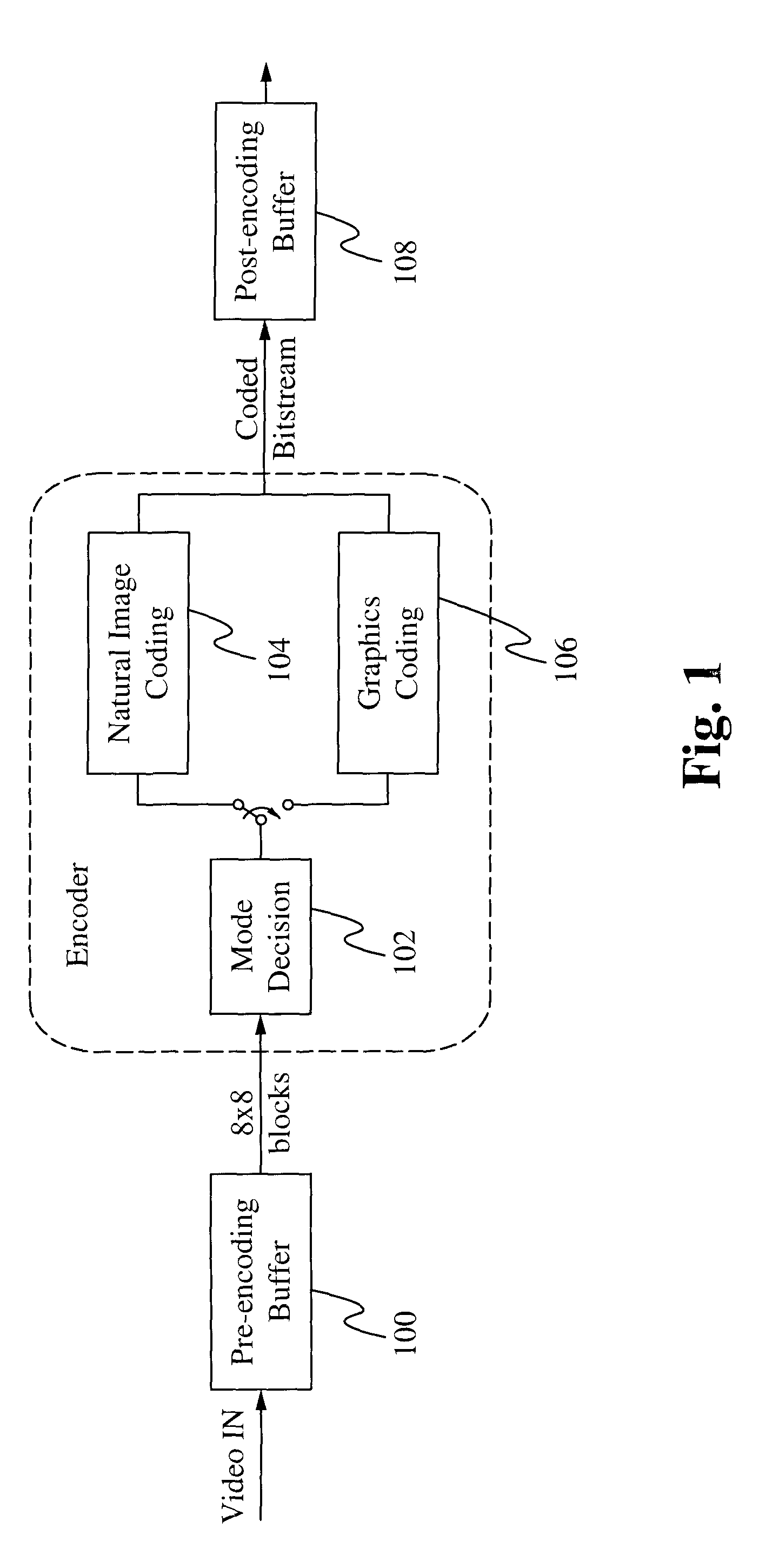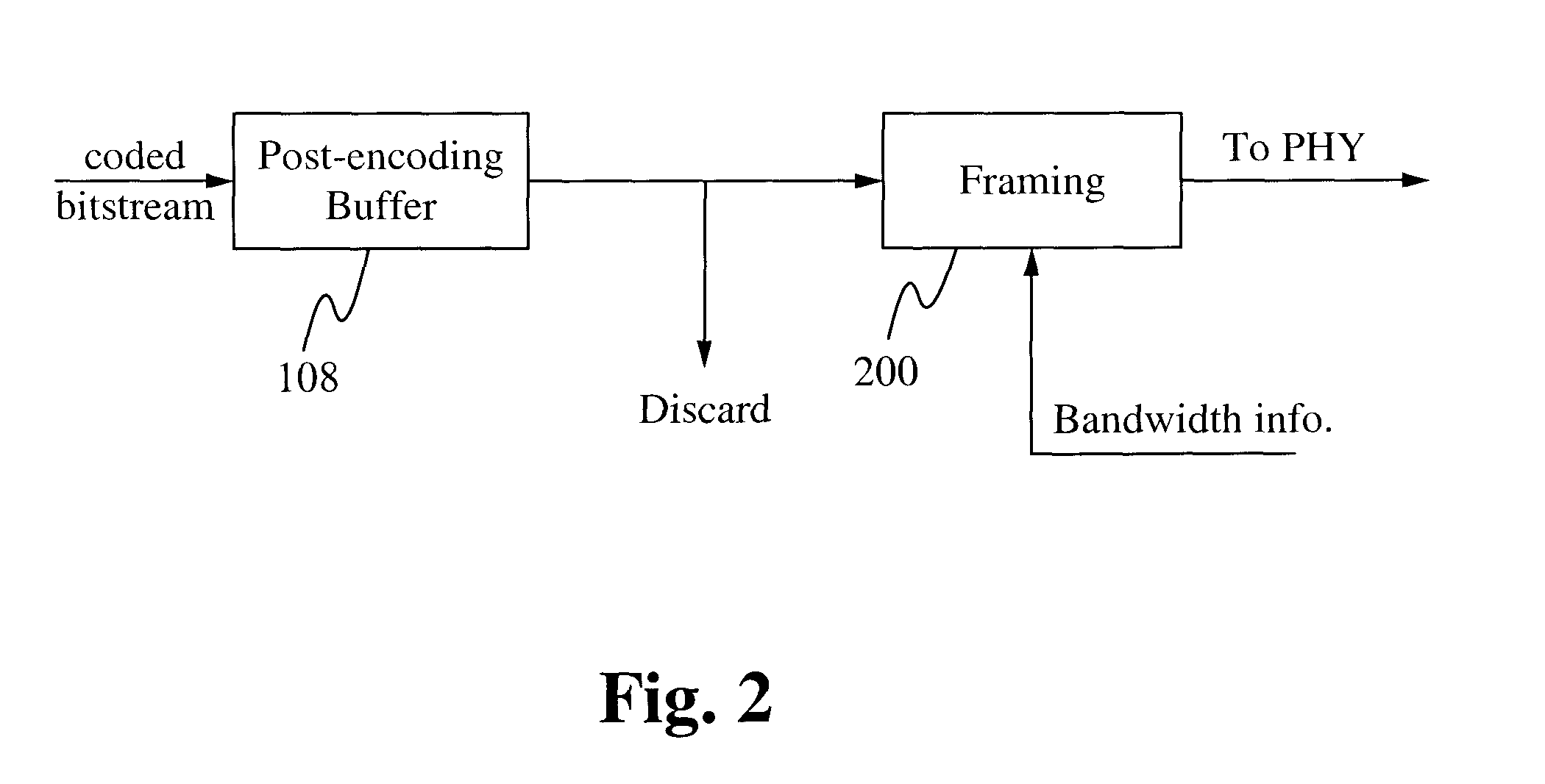Dual-mode compression of images and videos for reliable real-time transmission
a real-time transmission and image compression technology, applied in the field of image processing, can solve the problems of ineffective traditional natural image coding schemes (e.g. dct based ones), and achieve the effects of less memory requirements, less complex, and less pre-encoding prediction
- Summary
- Abstract
- Description
- Claims
- Application Information
AI Technical Summary
Benefits of technology
Problems solved by technology
Method used
Image
Examples
Embodiment Construction
[0018]A dual-mode compression scheme for use with reliable real-time image / video transmission is described herein. In WiHD 1.0, a video signal is not compressed. To adapt to available channel bandwidth changes, a subset of pixels are discarded. In the dual-mode compression scheme, a low-complexity, scalable video coder / decoder (codec) is used which is described herein. The dual-mode codec provides graceful video quality degradation when the available channel bandwidth changes.
[0019]In the dual-mode codec, information from previous frames is not used for coding, a frame buffer is not needed for previous frames, and there is no search for motion estimation. This lowers memory requirements and complexity. The implementation is block-based, where the encoder and decoder process each block independently. This also uses less memory and is less complex. The bitstream is able to be embedded such that each block is able to be stopped anywhere. Since the bitstream is embedded, it is easily ad...
PUM
 Login to View More
Login to View More Abstract
Description
Claims
Application Information
 Login to View More
Login to View More - R&D
- Intellectual Property
- Life Sciences
- Materials
- Tech Scout
- Unparalleled Data Quality
- Higher Quality Content
- 60% Fewer Hallucinations
Browse by: Latest US Patents, China's latest patents, Technical Efficacy Thesaurus, Application Domain, Technology Topic, Popular Technical Reports.
© 2025 PatSnap. All rights reserved.Legal|Privacy policy|Modern Slavery Act Transparency Statement|Sitemap|About US| Contact US: help@patsnap.com



